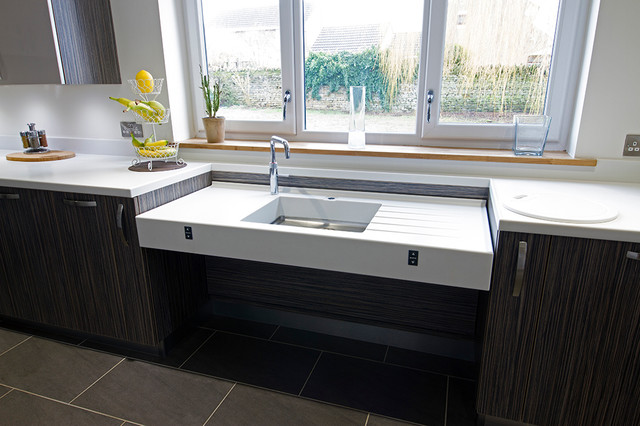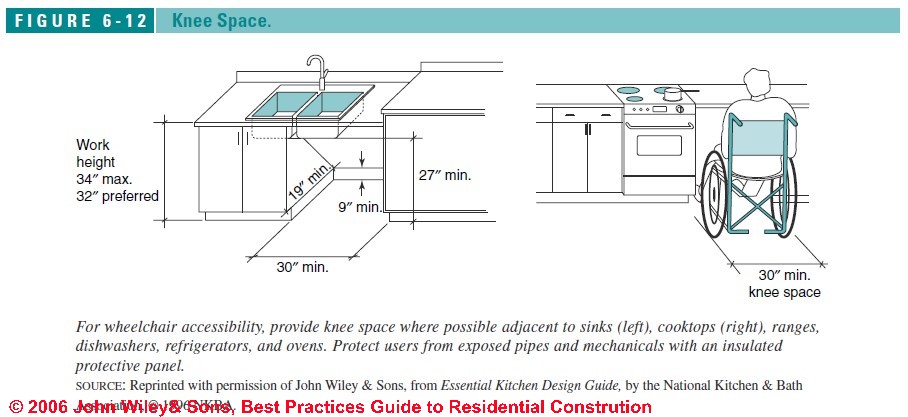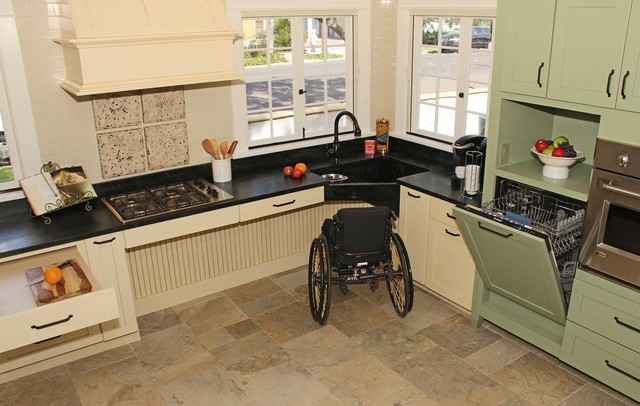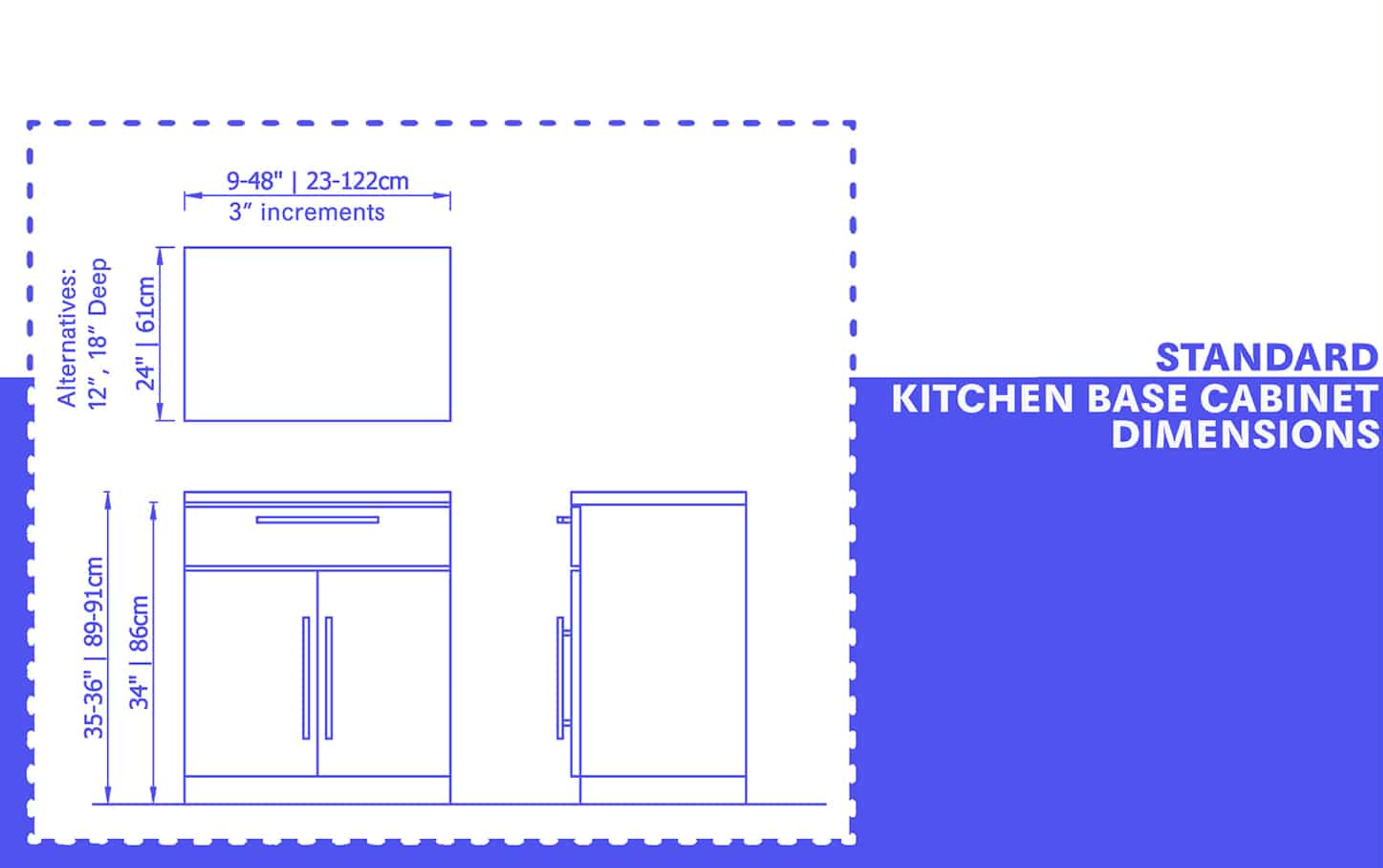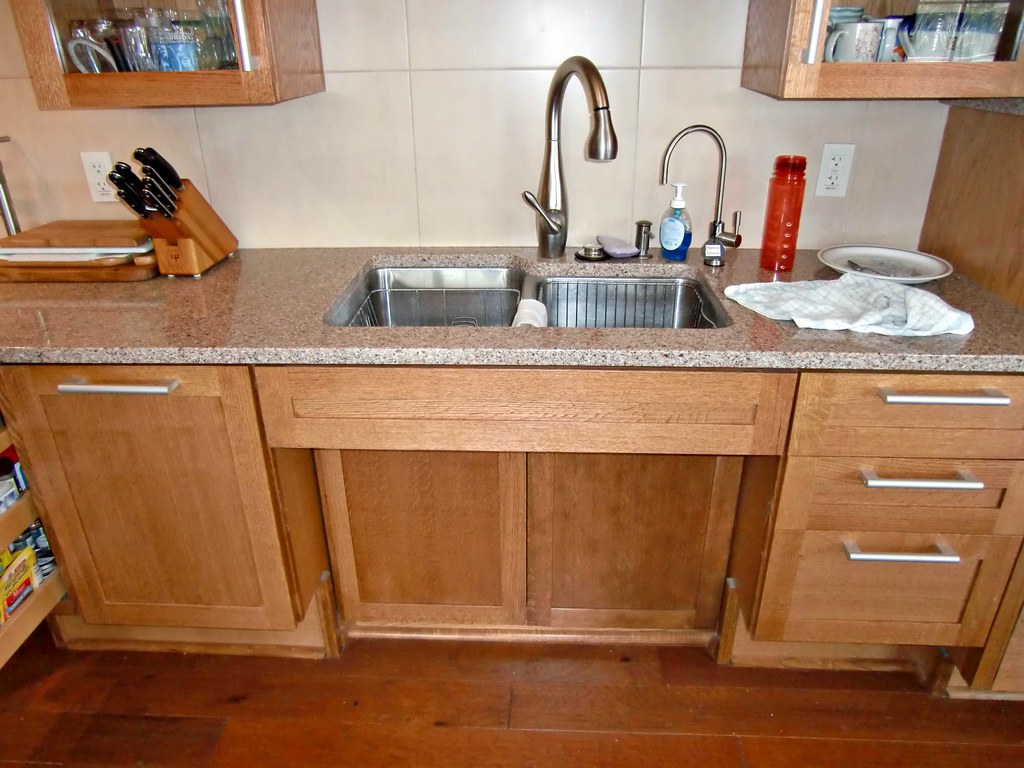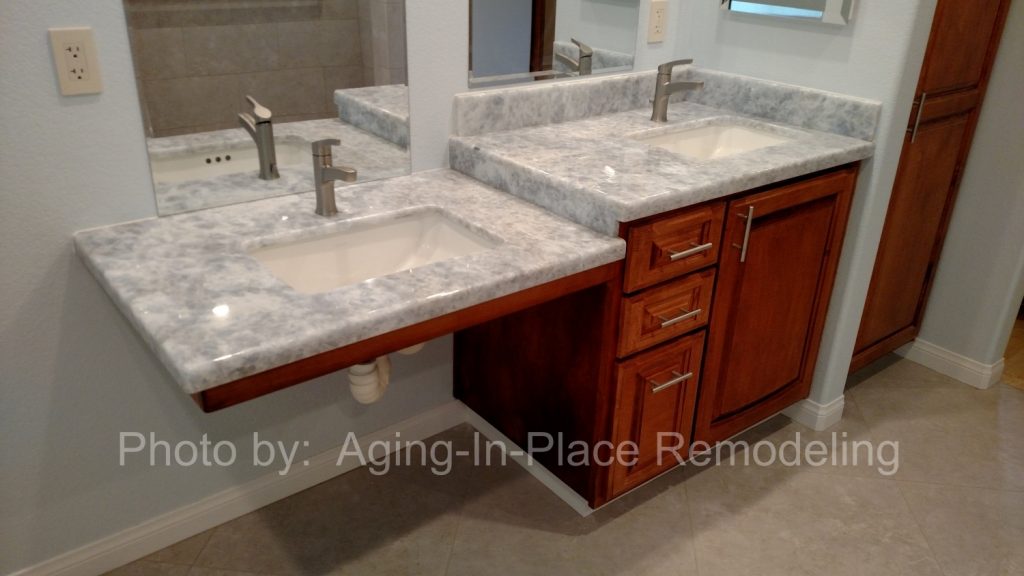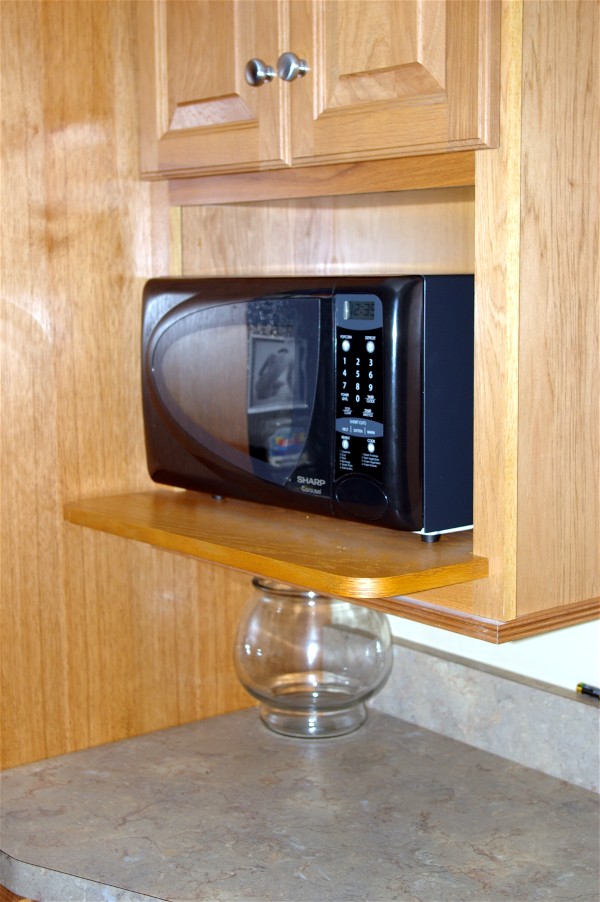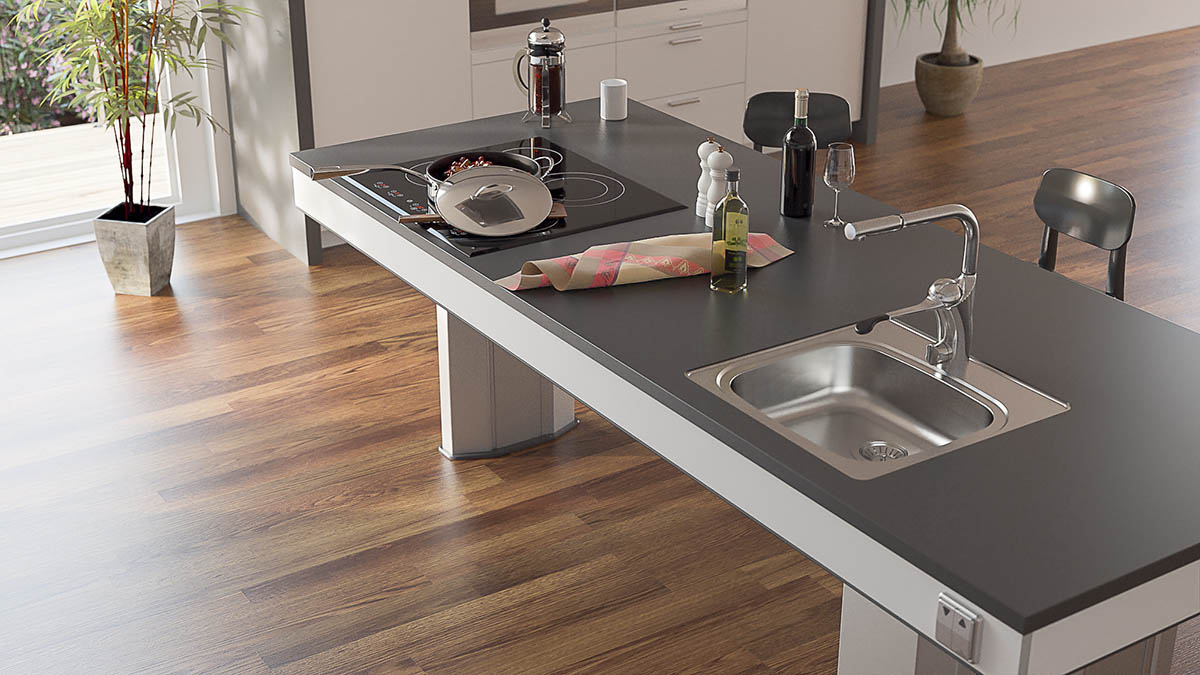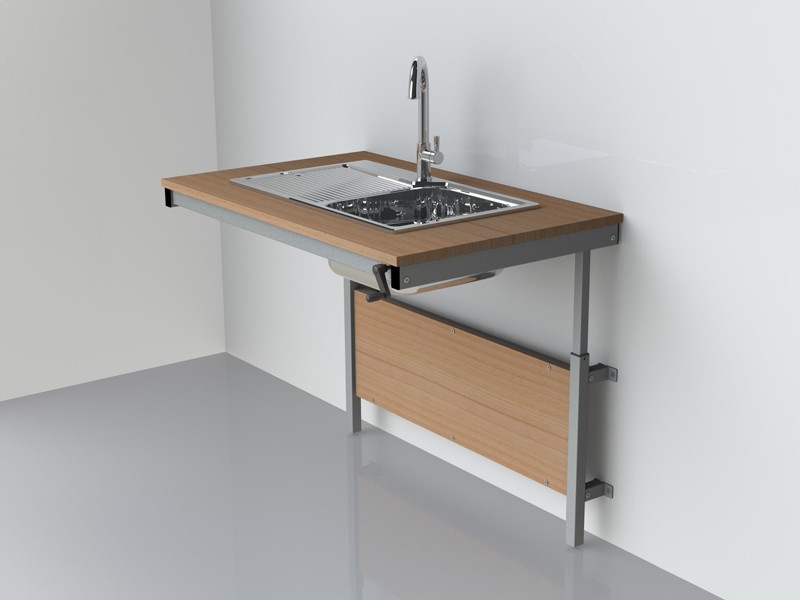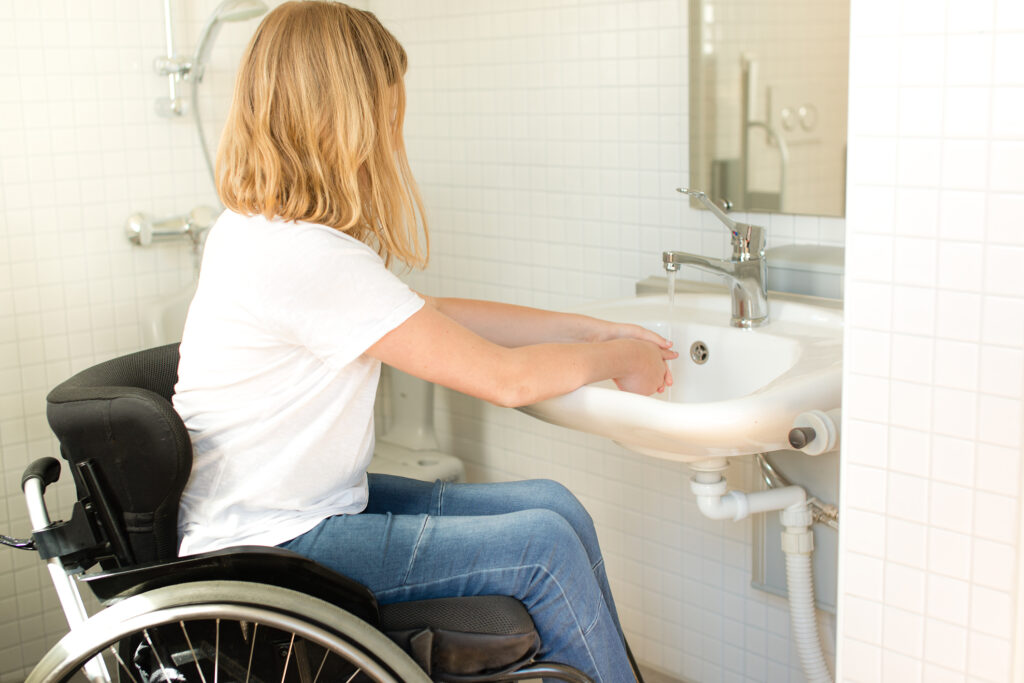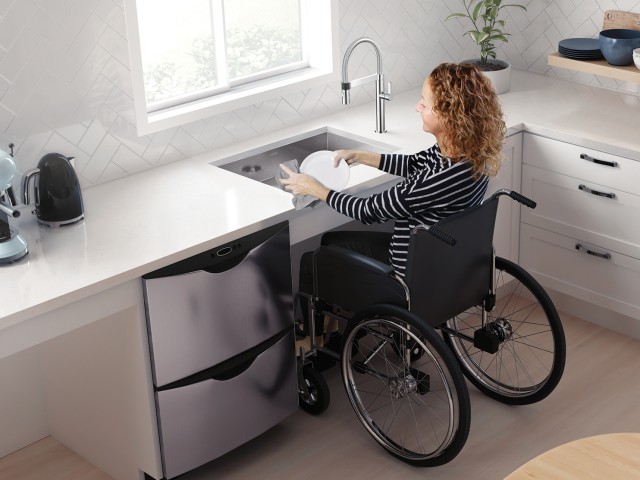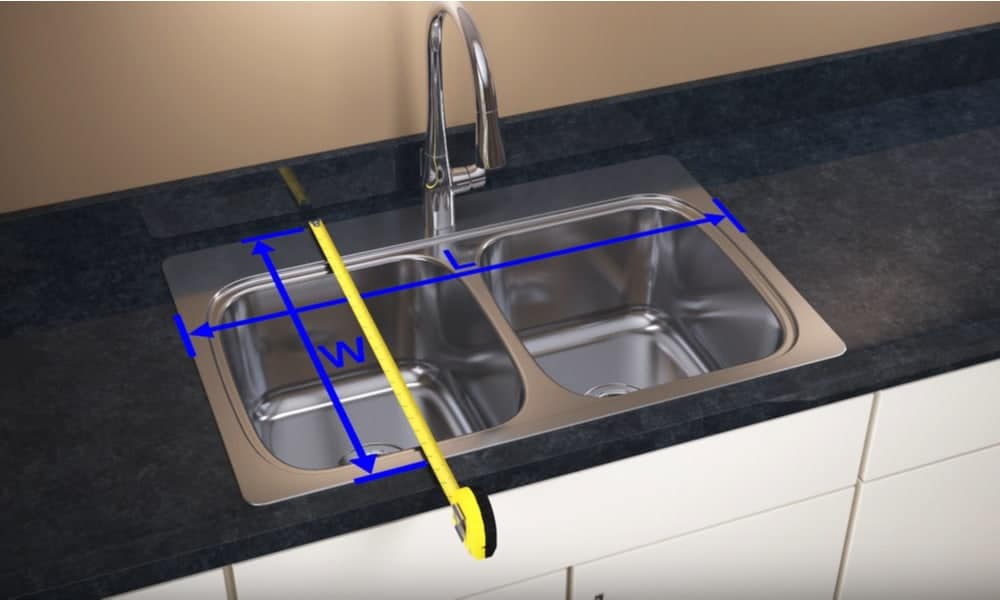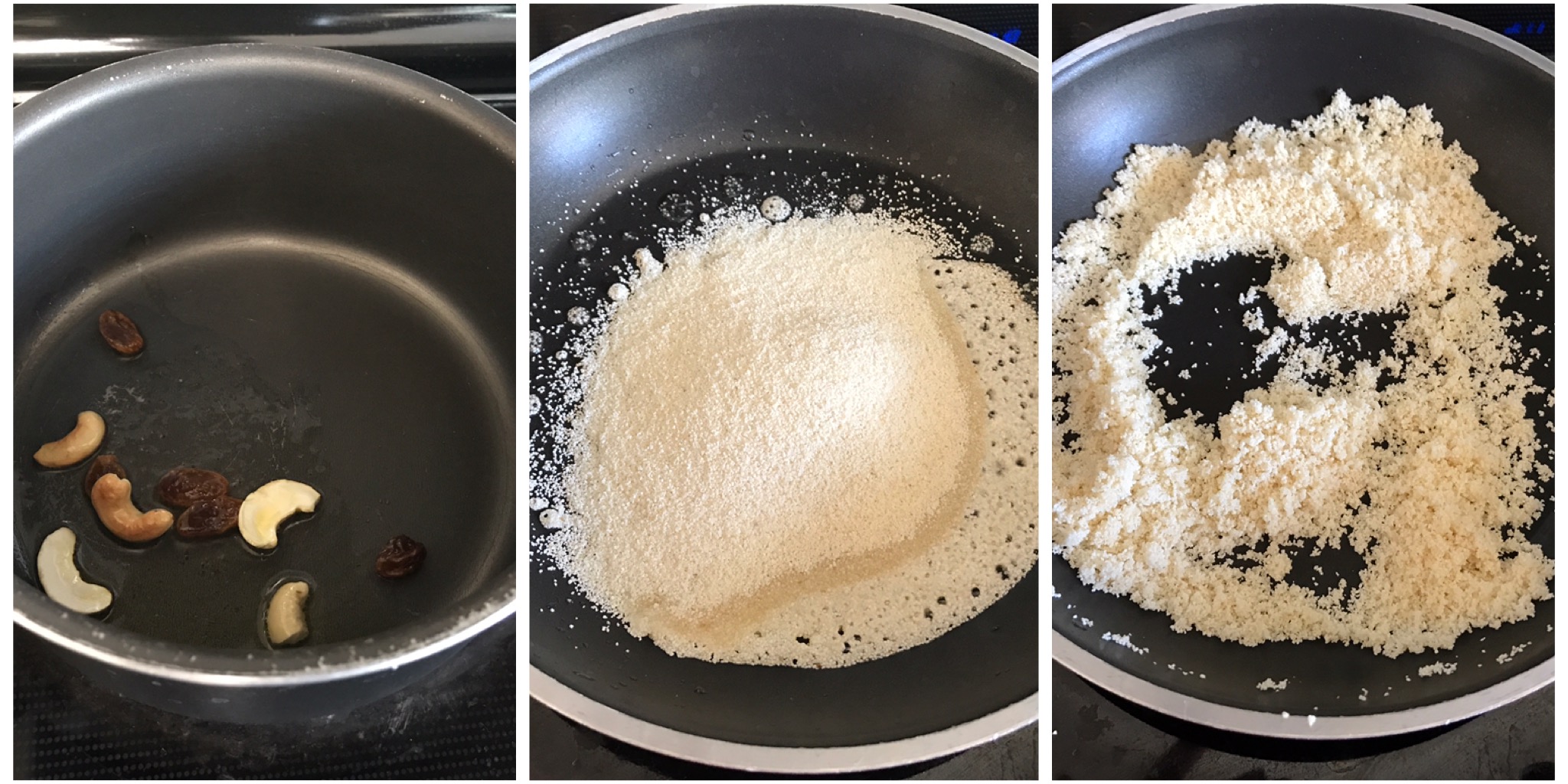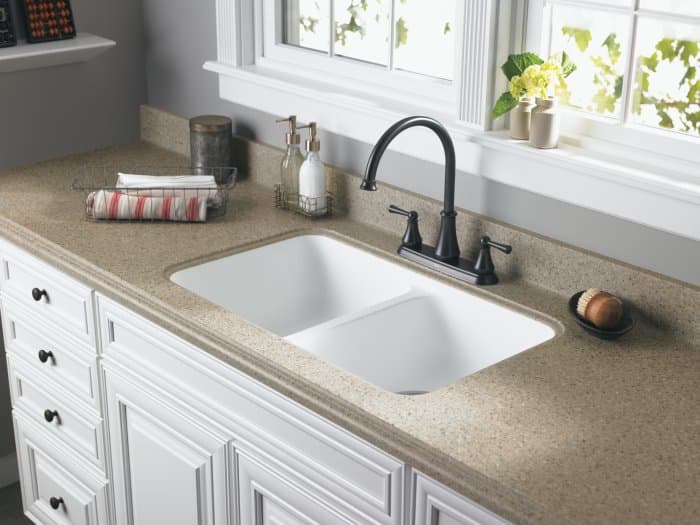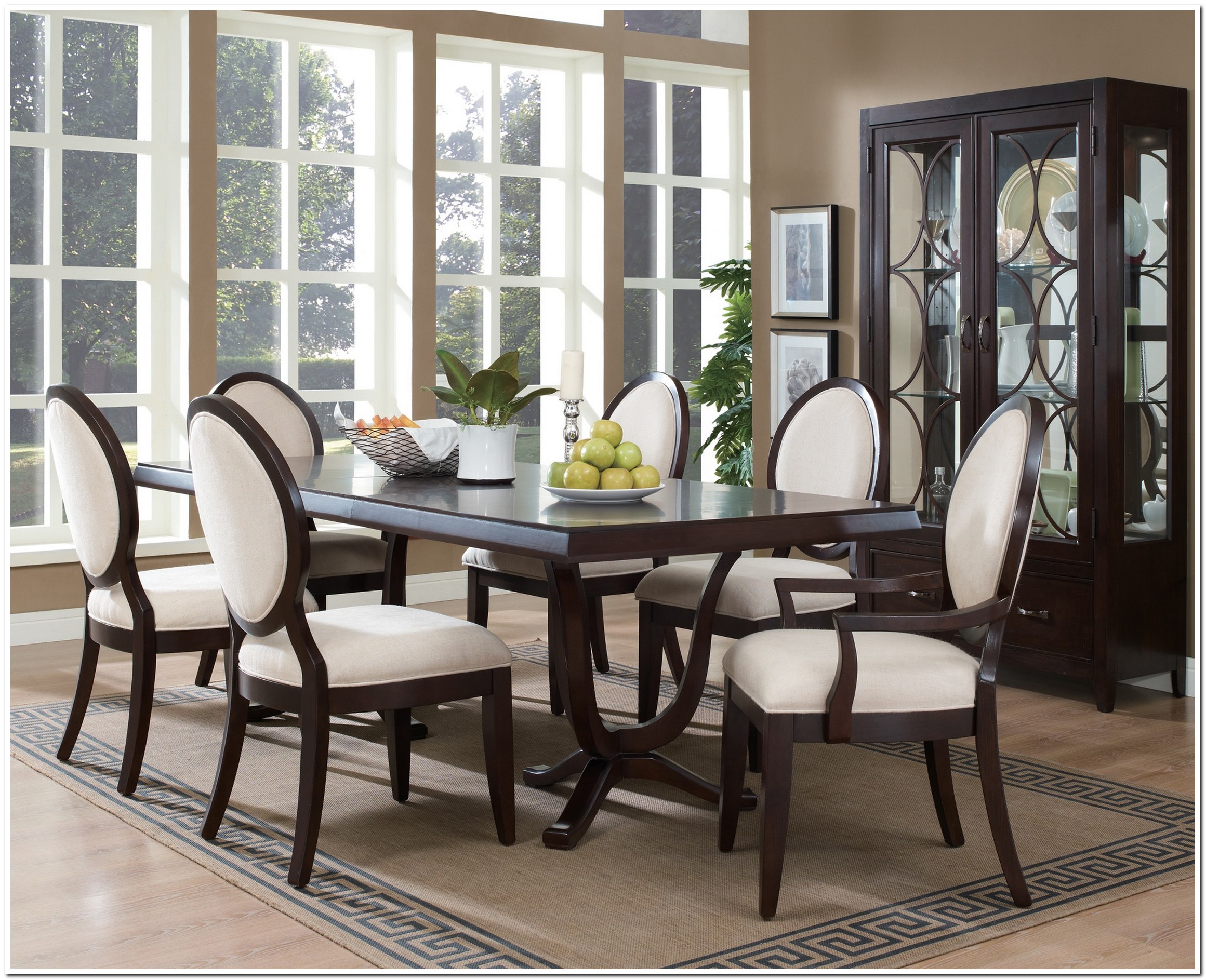The Americans with Disabilities Act (ADA) sets guidelines and requirements for accessibility in public spaces, including kitchens. For those with disabilities, having a kitchen that is functional and accessible is essential for everyday tasks. One important aspect of an ADA compliant kitchen is the sink. In this article, we will discuss the top 10 main handicap kitchen sink dimensions to help you create a kitchen that meets ADA standards and is suitable for individuals with disabilities.ADA Compliant Kitchen Sinks: What You Need to Know
When it comes to handicap kitchen sink dimensions, there are certain requirements that need to be met to ensure accessibility. According to the ADA, the sink should have a minimum depth of 5 inches and a maximum depth of 6.5 inches. The sink should also have a clear floor space of at least 30 inches by 48 inches in front of it to accommodate a wheelchair.Handicap Kitchen Sink Dimensions and Requirements
For wheelchair users, having a sink that is the right height and depth is crucial. The ADA requires that the sink be no higher than 34 inches from the floor and no lower than 29 inches. This allows for easy reach and use of the sink while seated in a wheelchair. The sink should also have a clear knee space of at least 27 inches high, 30 inches wide, and 19 inches deep.Accessible Kitchen Sink Dimensions for Wheelchair Users
While the ADA sets guidelines for sink dimensions, there are also standard dimensions that are commonly used for handicap kitchen sinks. These include a sink depth of 6 inches, a sink height of 32 inches, and a clear floor space of 36 inches by 48 inches. These dimensions provide a comfortable and accessible sink for individuals with disabilities.Standard Dimensions for Handicap Kitchen Sinks
When it comes to choosing the right size handicap kitchen sink, it is important to consider the individual's needs and abilities. If the sink will primarily be used by someone in a wheelchair, it is best to follow the ADA guidelines and choose a sink that is the right height and has a clear knee space. However, if the sink will also be used by able-bodied individuals, it may be more practical to opt for standard dimensions that can accommodate both groups of users.Choosing the Right Size Handicap Kitchen Sink
An alternative to fixed height sinks is an adjustable height kitchen sink. These sinks can be raised or lowered to accommodate different users, making them a great option for individuals with disabilities. Some models even have a motorized feature for easy adjustment. However, it is important to ensure that the sink meets ADA guidelines for height and knee space when in a lowered position.Adjustable Height Kitchen Sinks for Handicap Accessibility
While there are specific guidelines and standard dimensions for handicap kitchen sinks, it is always recommended to consult with a professional to determine the best dimensions for your specific needs and space. They can help you choose a sink that meets ADA requirements and is functional for your kitchen layout.Recommended Dimensions for Handicap Kitchen Sinks
In addition to sink dimensions, the ADA also has requirements for faucet controls and accessories for individuals with disabilities. Faucet controls should be easily operable with one hand and have a maximum force of 5 pounds to turn on and off. Soap dispensers and other accessories should also be easily reachable from a seated position.Understanding the ADA Requirements for Kitchen Sinks
If you are renovating your kitchen to make it more handicap accessible, it is important to measure carefully to ensure the sink meets ADA requirements. Measure the depth, height, and knee space of the sink as well as the clear floor space in front of it. These measurements will help you choose the right size sink for your needs.How to Measure for a Handicap Kitchen Sink
Designing a wheelchair accessible kitchen sink involves more than just choosing the right size sink. It is important to consider the entire layout and functionality of the kitchen, including the placement of appliances and storage. A professional designer can help you create a space that is not only accessible but also practical and aesthetically pleasing. In conclusion, when it comes to creating an ADA compliant kitchen, choosing the right size handicap kitchen sink is essential. By following the guidelines and recommendations for sink dimensions, you can ensure that your kitchen is accessible and functional for individuals with disabilities. Consult with a professional for assistance in designing a kitchen that meets ADA requirements and fits your specific needs and space.Designing a Wheelchair Accessible Kitchen Sink
The Importance of Handicap Kitchen Sink Dimensions in Accessible House Design

Creating a Welcoming and Functional Space
 Handicap accessible kitchen sink dimensions
may not be the first thing that comes to mind when designing a house, but it can make a significant impact on the overall accessibility and functionality of the space. For individuals with mobility impairments or those who use a wheelchair, traditional kitchen sink dimensions can be limiting and challenging to navigate. By incorporating
handicap kitchen sink dimensions
into the design, you can create a welcoming and functional space for all individuals in the household.
Handicap accessible kitchen sink dimensions
may not be the first thing that comes to mind when designing a house, but it can make a significant impact on the overall accessibility and functionality of the space. For individuals with mobility impairments or those who use a wheelchair, traditional kitchen sink dimensions can be limiting and challenging to navigate. By incorporating
handicap kitchen sink dimensions
into the design, you can create a welcoming and functional space for all individuals in the household.
Meeting ADA Standards
 The Americans with Disabilities Act (ADA) has set standards for the design of accessible spaces, including kitchens. According to these guidelines, the
handicap kitchen sink dimensions
should be at a height of 34 inches, with a knee clearance of at least 27 inches high, 30 inches wide, and 19 inches deep. This allows individuals in wheelchairs to comfortably reach and use the sink without any obstructions. Additionally, the sink should have a single faucet that can be operated with one hand, and the pipes should be insulated to prevent burns.
The Americans with Disabilities Act (ADA) has set standards for the design of accessible spaces, including kitchens. According to these guidelines, the
handicap kitchen sink dimensions
should be at a height of 34 inches, with a knee clearance of at least 27 inches high, 30 inches wide, and 19 inches deep. This allows individuals in wheelchairs to comfortably reach and use the sink without any obstructions. Additionally, the sink should have a single faucet that can be operated with one hand, and the pipes should be insulated to prevent burns.
Creating a Safe and Independent Environment
 Incorporating
handicap kitchen sink dimensions
not only meets ADA standards but also promotes safety and independence for individuals with mobility impairments. With the proper sink dimensions, tasks such as washing dishes and preparing food can be done without assistance, allowing individuals to maintain their privacy and dignity. This can greatly improve their quality of life and overall well-being.
Incorporating
handicap kitchen sink dimensions
not only meets ADA standards but also promotes safety and independence for individuals with mobility impairments. With the proper sink dimensions, tasks such as washing dishes and preparing food can be done without assistance, allowing individuals to maintain their privacy and dignity. This can greatly improve their quality of life and overall well-being.
Creating an Aesthetically Pleasing Design
 Some may worry that incorporating
handicap kitchen sink dimensions
into their house design will compromise the aesthetics of their kitchen. However, with advancements in design and technology, accessible kitchen sinks can now be seamlessly integrated into any kitchen design. From sleek and modern to traditional and rustic, there are various options available to fit your personal style.
Some may worry that incorporating
handicap kitchen sink dimensions
into their house design will compromise the aesthetics of their kitchen. However, with advancements in design and technology, accessible kitchen sinks can now be seamlessly integrated into any kitchen design. From sleek and modern to traditional and rustic, there are various options available to fit your personal style.
The Bottom Line
 Handicap kitchen sink dimensions
may seem like a minor detail, but they play a crucial role in creating an accessible, safe, and functional kitchen for individuals with mobility impairments. By incorporating these dimensions into your house design, you can promote inclusivity and create a welcoming space for all individuals in your household. So, when planning your dream house, don't forget to consider the importance of
handicap kitchen sink dimensions
.
Handicap kitchen sink dimensions
may seem like a minor detail, but they play a crucial role in creating an accessible, safe, and functional kitchen for individuals with mobility impairments. By incorporating these dimensions into your house design, you can promote inclusivity and create a welcoming space for all individuals in your household. So, when planning your dream house, don't forget to consider the importance of
handicap kitchen sink dimensions
.






















